The Metaverse: An Introduction to Educational Content
The concept of the metaverse has gained significant attention in recent years, especially with the growing popularity of virtual reality and augmented reality technologies. In simple terms, the metaverse refers to a fully immersive, virtual world where users can interact with one another and their surroundings. While the metaverse has been primarily associated with entertainment and gaming, its potential for educational purposes is becoming increasingly evident.
One of the key advantages of the metaverse in an educational context is its ability to provide a highly engaging and immersive learning environment. Traditional classroom settings often struggle to captivate students’ attention, but with the metaverse, educators have the opportunity to create dynamic and interactive experiences that make learning more enjoyable and impactful. For example, instead of reading about history in a textbook, students can step into a virtual historical setting and witness events firsthand.
Enhanced Collaboration and Communication
Another significant benefit of the metaverse is its ability to facilitate collaboration and communication among learners. In a traditional classroom, students often work in isolation, but in the metaverse, they can engage in group projects and activities with their peers from anywhere in the world. This not only promotes teamwork but also exposes students to different perspectives and cultures.
Moreover, the metaverse allows for real-time communication through voice and text, enabling students and educators to interact with each other seamlessly. This instant feedback fosters a more dynamic and interactive learning experience, as students can seek clarification and guidance in real-time.
Endless Possibilities for Content Creation
One of the most exciting aspects of the metaverse in education is the vast range of possibilities for content creation. Educators can design virtual spaces and scenarios tailored to specific learning objectives, allowing for personalized and adaptive learning experiences. Whether it’s exploring distant planets, conducting virtual experiments, or practicing language skills with native speakers, the metaverse offers endless opportunities for immersive learning.
Furthermore, the metaverse enables educators to incorporate multimedia elements into their lessons effortlessly. By utilizing 3D models, interactive simulations, and virtual avatars, teachers can reinforce concepts and engage students in ways not possible with traditional teaching methods. This multi-sensory approach enhances comprehension and retention, making learning more effective.
In conclusion, the metaverse presents a promising future for educational content. Its immersive nature, enhanced collaboration and communication capabilities, as well as the endless possibilities for content creation, make it a powerful tool for transforming the way we learn. As technology continues to advance, the metaverse has the potential to revolutionize education by providing engaging, interactive, and personalized learning experiences.
Exploring the Potential of Metaverse in Education
Exploring the Potential of Metaverse in Education
The concept of the metaverse has gained significant attention in recent years, with its potential to revolutionize various industries. One area where the metaverse holds great promise is education. As technology continues to advance, educators are constantly looking for innovative ways to enhance the learning experience for students. The metaverse presents an exciting opportunity to create immersive and interactive virtual environments that can dramatically transform the way we teach and learn.
In the metaverse, students have the ability to engage with educational content in a whole new way. Imagine a history lesson where students can step into an ancient civilization, interact with virtual representations of historical figures, and experience key events firsthand. This immersive experience allows for a deeper understanding and retention of knowledge compared to traditional classroom settings. Furthermore, students can collaborate with their peers in virtual classrooms, regardless of geographical boundaries. This opens up a world of possibilities for global collaboration and cross-cultural learning.
One of the key advantages of the metaverse in education is its ability to cater to different learning styles. While traditional classrooms often rely heavily on auditory and visual learning, the metaverse allows for kinesthetic learning as well. Students can physically interact with objects and simulations, which enhances their understanding and engagement. Additionally, the metaverse enables personalized learning experiences, where students can progress at their own pace and explore topics that align with their interests. This customization fosters a sense of ownership and motivation, leading to enhanced learning outcomes.
Integrating the metaverse into education also addresses the issue of accessibility. Virtual environments can be designed to accommodate individuals with disabilities, providing equal opportunities for all students to participate and learn. Furthermore, the metaverse reduces the reliance on physical infrastructure, making education more accessible in remote areas or during times of crisis. In the face of the COVID-19 pandemic, the metaverse has become an invaluable tool for remote learning, ensuring continuity in education even when face-to-face interactions are limited.
Despite its potential, the use of the metaverse in education is still in its early stages. There are challenges to overcome, such as the need for reliable internet connectivity and the development of suitable educational content. Additionally, teachers will need training and support to effectively integrate the metaverse into their teaching practices. However, with the rapid advancements in technology and the increasing demand for flexible and engaging learning experiences, the metaverse has the potential to become the future of education.
In conclusion, the metaverse offers immense possibilities for transforming education. By creating immersive and interactive virtual environments, students can engage in experiential learning, collaborate with peers around the world, and benefit from personalized educational experiences. The metaverse also addresses issues of accessibility and enables remote learning. While there are challenges to overcome, the potential benefits far outweigh the obstacles. As we continue to explore the potential of the metaverse in education, we are poised to revolutionize the way we teach and learn, shaping a future where education knows no bounds.
Using the Metaverse to Engage Students in Learning
The concept of the metaverse has gained significant attention in recent years, especially in the world of education. The metaverse refers to a virtual reality-based space where users can interact with a computer-generated environment and other users in real-time. This technology has the potential to revolutionize the way students engage with learning materials and enhance their overall educational experience.
Benefits of using the metaverse in education
There are several key benefits to incorporating the metaverse into the classroom. First and foremost, it provides a highly immersive and interactive learning environment. Traditional education often relies on passive consumption of information, but the metaverse allows students to actively participate and engage with the content. They can explore virtual worlds, manipulate objects, and collaborate with fellow students, making the learning process more enjoyable and impactful.
Another advantage of the metaverse is its ability to break down geographical boundaries. With this technology, students from different parts of the world can connect and interact as if they were in the same physical location. This opens up countless opportunities for global collaboration and cultural exchange, allowing students to broaden their perspectives and develop a more global mindset.
Practical applications of the metaverse in education
The metaverse offers endless possibilities for educational applications. For instance, science classes can take virtual field trips to explore inaccessible environments like outer space or coral reefs. History lessons can come to life as students navigate through accurate virtual recreations of ancient civilizations. Language learners can practice their skills in simulated real-life scenarios, improving their fluency and cultural understanding.
Furthermore, the metaverse can be used to simulate practical experiences that are otherwise risky or costly. For example, medical students can practice complex surgical procedures in a virtual operating room before ever entering a real one. This not only enhances their technical skills but also boosts their confidence and reduces the margin for error.
Considerations and challenges in implementing the metaverse
While the metaverse holds great promise for education, there are a few considerations and challenges that need to be acknowledged. Firstly, there is the issue of accessibility. Not all students may have access to the necessary technology and equipment to fully participate in the metaverse experience. Schools and institutions would need to ensure equal access for all students to avoid creating a digital divide.
Another challenge is the need for proper training and support for educators. Implementing the metaverse effectively requires teachers who are well-versed in the technology and can guide students through the virtual learning experiences. Professional development programs and ongoing support would be essential to empower educators and ensure successful integration of the metaverse into the curriculum.
In conclusion, the metaverse has the potential to revolutionize education by offering a highly immersive and interactive learning experience. It enables students to engage with educational content in ways that were not possible before, breaking down geographical barriers and simulating practical experiences. While there are challenges to overcome, the benefits of incorporating the metaverse into education are undeniable, opening up new frontiers for teaching and learning.
How Metaverse Educational Content Enhances Student Collaboration
In today’s rapidly evolving digital age, the concept of education has transformed significantly. One such transformative technology that has been gaining popularity in the educational sphere is the metaverse. The metaverse refers to a virtual immersive space that allows users to interact with each other and with virtual objects in real-time, creating a truly collaborative learning environment.
One of the key advantages of using metaverse educational content is that it enhances student collaboration. Traditional classroom settings often limit collaboration opportunities due to physical constraints and time limitations. However, in the metaverse, students from different locations can come together in a virtual space to collaborate on projects, share ideas, and learn from each other.
The benefits of metaverse educational content for student collaboration are:
- Global collaboration: The metaverse breaks down geographical barriers, allowing students from different parts of the world to collaborate effortlessly. This global collaboration exposes students to diverse perspectives, thereby enhancing their learning experience.
- Real-time interaction: In the metaverse, students can communicate and interact with each other in real-time. This immediacy fosters active collaboration, as students can respond to each other’s ideas, provide feedback, and work together to solve problems.
- Creative expression: Metaverse educational content often incorporates elements of creativity and imagination. By leveraging virtual tools and environments, students can unleash their creative potential and express their ideas in new and exciting ways. This fosters collaborative creativity, as students can build upon and inspire each other’s ideas.
- Enhanced engagement: The immersive nature of the metaverse grabs students’ attention and keeps them engaged throughout the learning process. This heightened engagement translates into increased collaboration, as students actively participate and contribute to group projects and discussions.
Moreover, metaverse educational content promotes collaborative problem-solving skills. In a traditional classroom, students often rely on the teacher for guidance. However, in the metaverse, students are encouraged to take charge of their learning and find solutions collectively. This collaborative problem-solving approach not only strengthens students’ critical thinking skills but also prepares them for the collaborative nature of the modern workforce.
Furthermore, the metaverse allows for personalized learning experiences, which further enhances student collaboration. Students can explore different virtual environments based on their interests and learning preferences. This personalized approach to learning promotes self-discovery and encourages students to take ownership of their education. When students have the autonomy to choose and customize their learning experiences, they become more motivated to collaborate with their peers and actively contribute to the learning process.
In conclusion, the metaverse’s educational potential extends beyond the boundaries of traditional classrooms. Through its immersive and collaborative nature, metaverse educational content enhances student collaboration, promotes global engagement, sparks creativity, and fosters problem-solving skills. As technology continues to advance, the metaverse presents incredible opportunities for educators to revolutionize the way students collaborate and learn.
The Role of Virtual Reality in the Development of Metaverse Educational Content
Virtual Reality (VR) has revolutionized the way we experience and interact with content. In recent years, VR has emerged as a powerful tool in the development of metaverse educational content, offering a new dimension to the learning process. By immersing users in virtual environments, VR allows for a more engaging and interactive educational experience.
One of the key advantages of using VR in the development of metaverse educational content is its ability to provide a realistic and immersive learning environment. With VR, learners can explore virtual worlds and interact with objects and characters in a way that was previously impossible. This hands-on approach enhances the learning process by allowing students to actively engage with the subject matter, leading to better understanding and retention of knowledge.
Moreover, VR enables educators to create simulated scenarios that mimic real-life situations, providing students with a safe and controlled environment to practice and apply their skills. For example, medical students can use VR to simulate surgeries and practice their surgical techniques, without the risk of harming real patients. This not only enhances their learning experience but also increases their confidence and competence in their chosen field.
In addition to its immersive nature, VR has the potential to make education more accessible and inclusive. Traditional education often relies on physical infrastructure and resources that may not be available to everyone. However, with VR, educational content can be accessed from anywhere, breaking down barriers of physical distance and resource limitations. This opens up new possibilities for learners who may not have access to quality education due to their geographic location, socioeconomic status, or physical disabilities.
Furthermore, VR can cater to different learning styles and preferences. Not all individuals learn best through traditional methods, such as reading textbooks or listening to lectures. VR offers a multi-sensory experience, allowing learners to engage their visual, auditory, and even kinesthetic senses. This means that learners can customize their learning experience to suit their individual needs and preferences, resulting in a more personalized and effective learning journey.
The Future of VR in Metaverse Education
Looking ahead, the future of VR in the development of metaverse educational content is promising. As technology continues to advance, VR experiences will become more immersive and realistic, further enhancing the educational potential of this medium. Additionally, the development of metaverse platforms and social VR communities will facilitate collaborative learning and knowledge sharing among learners from around the world.
In conclusion, virtual reality is playing a crucial role in the development of metaverse educational content. Its immersive nature, ability to simulate real-world scenarios, accessibility, and customization options make it a powerful tool for enhancing the learning process. As VR technology continues to evolve, we can expect to see even more innovative applications of VR in education, opening up new possibilities and transforming the way we learn.
Creating Immersive and Interactive Learning Experiences in the Metaverse
In recent years, the concept of the metaverse has gained significant attention, especially in the technology and gaming industries. The metaverse is a virtual reality space where individuals can interact with a computer-generated environment and other users. This concept has enormous potential for transforming various areas, including education. The ability to create immersive and interactive learning experiences in the metaverse opens up new possibilities for educators to engage students like never before.
One of the key advantages of utilizing the metaverse for educational purposes is the ability to create a highly immersive learning environment. Traditional classroom settings can often be limiting, with students confined to fixed desks and chairs. However, in the metaverse, students can explore dynamic and interactive virtual environments that bring their learning materials to life. For example, rather than reading about ancient civilizations in a textbook, students can visit a virtual ancient civilization and experience it firsthand. This immersive experience not only enhances engagement but also allows for a deeper understanding of the subject matter.
Furthermore, the metaverse enables educators to create interactive learning experiences that encourage active participation from students. In traditional classrooms, students are often passive recipients of information, listening to lectures or watching presentations. However, in the metaverse, students can actively interact with the virtual environment and collaborate with their peers. For instance, in a science class, students can conduct virtual experiments and analyze real-time data. These interactive activities not only make learning more enjoyable but also foster critical thinking, problem-solving, and collaboration skills.
The Importance of Virtual Reality
Virtual reality plays a crucial role in creating these immersive and interactive learning experiences in the metaverse. With virtual reality headsets, users can fully immerse themselves in the virtual environment and experience it as if it were real. The combination of realistic visuals, spatial audio, and haptic feedback can simulate real-life scenarios with remarkable accuracy. This level of immersion can greatly enhance the learning process, as it enables students to engage their senses and experience educational content in a more holistic manner.
Moreover, virtual reality provides a safe environment for students to explore and experiment without the fear of making mistakes or causing harm. For instance, medical students can practice surgical procedures in a virtual operating room, allowing them to gain valuable experience before working on real patients. This hands-on simulation not only builds confidence but also reduces the risks associated with learning through trial and error in real-life situations. Virtual reality thus offers a unique opportunity for students to bridge the gap between theory and practice, making their learning experiences more practical and applicable.
The Future of Education in the Metaverse
As technology continues to advance, the potential of the metaverse in education will only grow. The metaverse can revolutionize traditional classroom-based learning by providing students with endless possibilities for exploration, collaboration, and creativity. Imagine attending virtual field trips to historical landmarks, conducting virtual science experiments, or collaborating with students from around the world without leaving the comfort of your home.
However, while the metaverse presents exciting opportunities, it is essential to consider potential challenges and concerns. Issues such as access and affordability, privacy and security, and ethical implications need to be addressed to ensure that the metaverse becomes an inclusive and safe space for learning. Nevertheless, with careful planning and responsible implementation, the metaverse has the potential to reshape education and create truly transformative learning experiences for students worldwide.
Exploring the Challenges and Opportunities of Metaverse Educational Content
Exploring the Challenges and Opportunities of Metaverse Educational Content
The metaverse, a virtual reality space where users can interact with a computer-generated environment, is rapidly gaining popularity, presenting both challenges and opportunities for educational content. As more educators and institutions recognize the benefits of incorporating immersive technology into their teaching strategies, it is important to explore the unique challenges and opportunities that metaverse educational content brings.
Challenges:
One of the primary challenges of metaverse educational content is the cost and accessibility. Implementing virtual reality technology requires significant financial investment, including the purchase of VR headsets and other necessary equipment. This can be a barrier for schools and institutions with limited budgets, preventing equal access to immersive learning experiences. Additionally, not all students may have access to high-speed internet or suitable devices to participate in metaverse educational experiences, creating a digital divide among students.
Another challenge lies in creating engaging and meaningful educational content within the metaverse. While the immersive nature of the metaverse offers exciting possibilities, it can also be overwhelming for educators who are new to this environment. Designing interactive lessons and activities that align with curricular goals while making the most of virtual reality features can be a steep learning curve. Moreover, ensuring that the metaverse educational content is age-appropriate, inclusive, and culturally sensitive requires careful consideration and planning.
Opportunities:
Despite the challenges, metaverse educational content offers numerous opportunities to revolutionize the way we teach and learn. Immersive experiences in the metaverse can enhance student engagement, motivation, and retention of information. By providing a more interactive and sensory-rich learning environment, students can develop a deeper understanding of complex concepts and theories.
Moreover, the metaverse allows for collaboration and connection among learners. Students can interact with their peers and educators from different geographical locations, fostering inclusive and diverse learning communities. This global interaction can broaden students’ perspectives and encourage cross-cultural understanding.
In addition, the metaverse provides opportunities for experiential learning, enabling students to apply their knowledge in practical and real-world contexts. For example, students studying history can virtually explore ancient civilizations, bringing history to life in an immersive way. Science students can conduct virtual experiments that may not be feasible in a traditional classroom setting. Such hands-on experiences can facilitate deeper learning and critical thinking skills.
Conclusion:
In conclusion, the challenges of cost, accessibility, content creation, and cultural sensitivity should not overshadow the immense opportunities that metaverse educational content can offer. By addressing these challenges head-on and harnessing the full potential of the metaverse, educators can create transformative learning experiences that better prepare students for the future. As virtual reality technology becomes more affordable and accessible, there is no doubt that metaverse educational content will continue to evolve and shape the future of education.



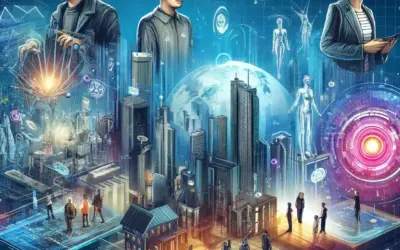
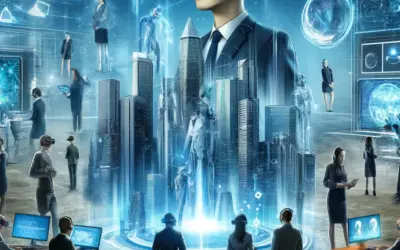
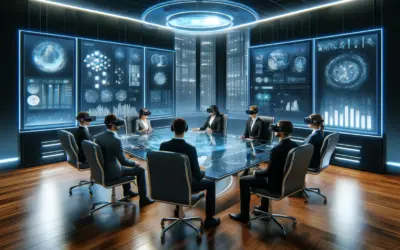
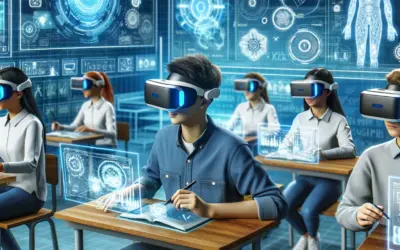
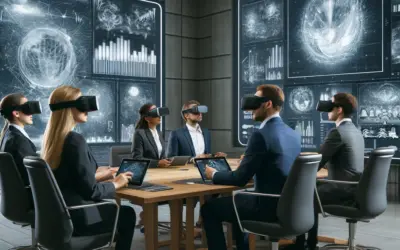
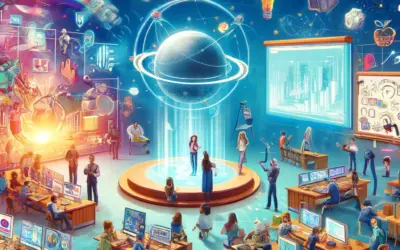
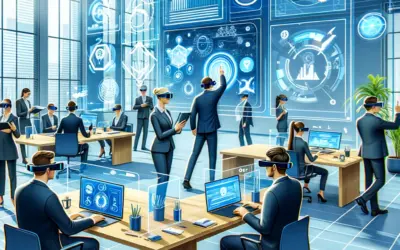

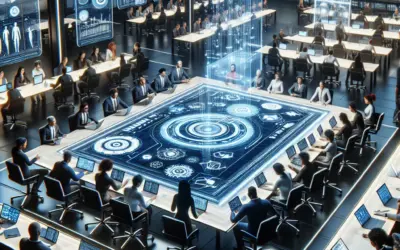
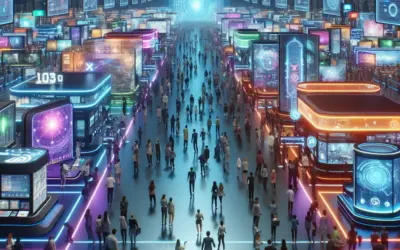
0 comentarios